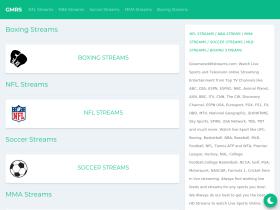Using szurubooru api to mail a picture
What is szurubooru api?
Szurubooru is an API that can be used to send pictures from a website. It is useful for sending large images or videos, as it allows you to send them in bulk without having to use a third party service such as SendOwl. Szurubooru is based on the Node.js API, so it should be compatible with most browsers and platforms, as long as they have a supported version of Node.js. The API supports the following features: Uploading files from a website
Display of images
Downloading files from a website

Sending messages to websites (Szurubooru does not send content itself) szurubooru api is free to use for both people and companies, but you will need an active account in order to load your own content. The service is available globally, but you can also get an API key for your country if required.
What are Tags and why use them?
One of the first things you’ll probably want to do when working with szurubooru api is set up tags. Tags are a way to group posts and pictures together, making it easy to find the content you’re looking for.
There are a few reasons you might want to use tags:
To organize your posts by topic (for example, all posts about Japan, all posts about travel, etc.)
Categorize your pictures (for example, all photos of food, all photos of friends, etc.)
Keep track of your ever-growing photo collection (for example, by year, by location, etc.)
Once you’ve set up some tags, it’s time to start using them! Here are a few tips:
Using the szurubooru api in a PHP script
One way to use the szurubooru api in a PHP script is to send an email with a picture attached. This is done by using the getPicture() function, as follows:
<?php /** * Get a picture from the Szurubooru API. * * @param int $id The id of the picture to get. */ function getPicture($id) { $uri = ‘http://api.szurubooru.com/3/images/’ . $id; $headers = array( ‘Content-Type’ => ‘image/png’, ‘Accept’ => ‘image/png, image/*;q=0.8’, ); $json = new JSON(); $json->setData($headers); $response = curl_init($uri); “apiId” : “YOUR API ID HERE”, …………………………………………………………………….. }
# Request the picture.
$result = $client->getPictures(“https://www.szurubooru.com/api”)->get(“201”);
# Get an array of images.
echo “”; foreach($result as $img) { echo “”.$img[“url”].””.$img[“width”].””.$img[“height”].””; } echo ‘
Sending Picture via the PHP script
If you want to send a picture as an email attachment, you can use the Szurubooru API. The API provides a way to access images and videos from websites and posts on social media. This means that you can send pictures and videos directly from your website or blog.
To use the API, you first need to sign up for an account. After you have registered, you will need to create an API key. Once you have your key, you can create a POST request using the following format:
POST http://api.szurubooru.com/v2/users/ {your_api_key} /attachments
In the example above, the user’s API key is “1234”. The POST request will include a file name as the parameter “file”. The file name must be in the form “.jpg” or “.png”. You can also include a video file as the parameter “video”. To send a picture as an attachment, include the following in your POST request:
file=picture.jpg video=video.mp4
When sending pictures or videos via the API, make sure that you use digital rights management (DRM) if needed. Mail clients like Thunderbird will automatically convert your attachments to this format depending on the DRM settings you choose.If you are using a browser-client, you can also upload files to their servers (such as Google Drive or Dropbox) and send them by sending a link to the file therein. To do so, embed the link in the appropriate field in your request:file=http://www.google.com/upload/myfile.jpgFor example, if you’re using Gmail, you can send a picture by sending “http://gmail.com/attachments/1234”. You can also include an audio file as well:audio=https://dl-cdn.googleusercontent.com/u/0/albums/




